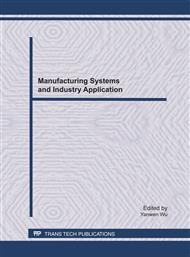p.70
p.74
p.80
p.86
p.92
p.98
p.104
p.109
p.114
A Quick Algorithm for Attribute Reduction Based on Divide and Conquer Method
Abstract:
Knowledge reduction is one of the most important contributions of rough set theory. High efficient algorithm is necessary for attribute reduction. In this paper, combining given attribute order and quick sort method, a heuristic algorithm for attribute reduction is developed. In this method, the objects in universe are divided into many small parts on the attributes by divide and conquer method, and different granules in different granular levels are obtained. The small ones can be processed quickly, so a fast heuristic algorithm for attribute reduction is proposed. Simulation experiment results illustrate the high efficiency of the improved knowledge reduction algorithm.
Info:
Periodical:
Pages:
92-97
Citation:
Online since:
June 2011
Authors:
Keywords:
Price:
Сopyright:
© 2011 Trans Tech Publications Ltd. All Rights Reserved
Share:
Citation:


